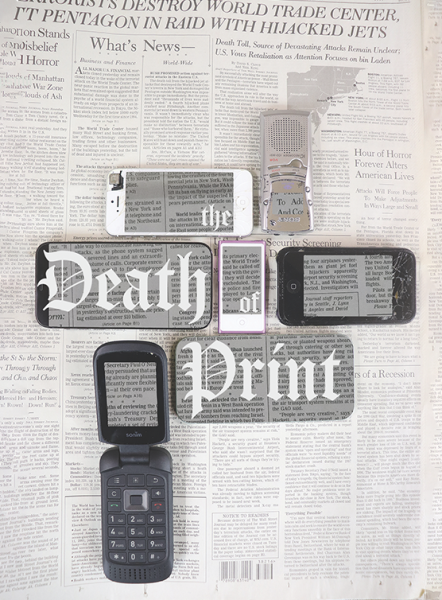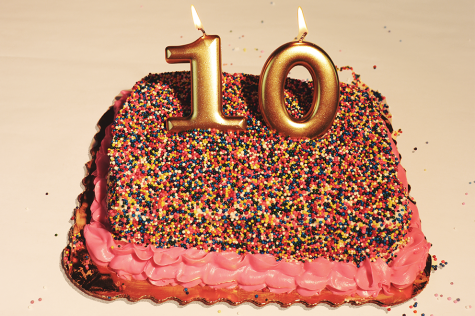Age of TRAP
A complete dissection of the Atlanta-based hip hop subgenre that has taken the world by storm.
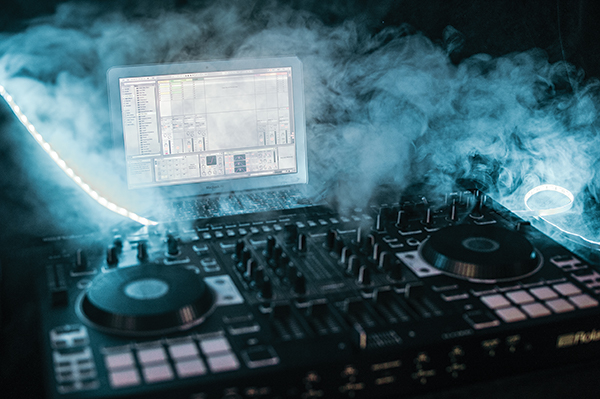
Photos by Ryan Gwyn
What will be the 2010’s defining musical genre? Each decade can be identified by the music that was popular at the time. The 60’s had the British invasion and protest music, the 70’s had disco, the 90’s had grunge–the list goes on. These musical eras provide a snapshot of their respective cultures, and often are remembered as the voices of the youth. So, which musical movement will be looked back on as our generation’s defining genre? Currently, it seems that hip hop’s new form, Trap, will be this decade’s most standout movement for years to come.
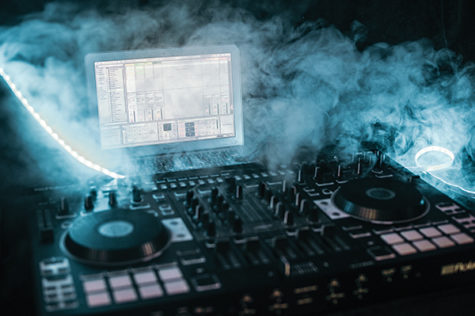
In terms of the music itself, Trap’s beats are characterized by heavy, distorted and layered bass and kick drums in addition to catchy instruments and sample use. Classic trap generally has one or more climaxes, known in the industry as a “drop” or “beat drop.” The drums in trap are made up of double or triple time subdivided hi-hats (the cymbals on the drum kit that make the “tsk” sound behind every beat) and a deep, grimey rhythm. Usually, kick drums are acquired from a Roland TR-808 or a similar drum machine. This drum machine is the root of the popular term “808s” used to describe the style of drumming of trap music. Many producers in the Trap industry use some type of Digital Audio Workstation, or DAW. This is a computer program to create, house and edit music recordings, whether from real instruments or digitally created software instruments. The most commonly used program among trap artists is Ableton Live 9, because of its powerful drum and bass and sampling capabilities, which allows for producers to create music by editing and repurposing existing songs.
The term “Trap,” surprisingly, can be traced a long way back. The first usage of the word can be heard in the duo Outkast’s song “Spottieottiedopalicious,” a popular rap song released in 1998, when one of the duo, Andre 3000, spat the line “so now you back in the Trap just that, Trapped.” But what is the “trap” that Andre refers to in this bar? The term was coined as an Atlanta-based slang term for a place where illegal deeds transpire, such as the dealing and consuming of drugs. In 2003, Atlanta rapper T.I. took the term and used it as a title and description for his new album “Trap Muzick.” With that, the genre was born, but modern Trap music as we know it still had a long journey ahead of it.
The early 2000’s movement of hip hop that preceded Trap music is commonly referred to as the “Bling” era of hip hop. It’s characterized by its braggadocious lyrics and upbeat production. While Bling hip hop was enjoying its popularity, some smaller artists from Atlanta were beginning to pioneer the Trap sound we’ve grown accustomed to. Along with TI, rappers such as Gucci Mane, Young Jeezy and Yo Gotti all wrote songs about drug dealing and their poverty stricken lives in Atlanta.
The years between 2001-2007 encompass the first wave of Trap music. In 2007 Kanye West released his album 808’s and Heartbreak, a pop-inspired album of moody beats and autotuned vocals. West’s use of the Roland Tr-808 drum machine’s kick drum layers a deep booming bass sound underneath the mix.

Once 2010 began, popular music was further from its acoustic roots than it had ever been before. EDM music was in full swing, and synthesizers and heavy drum beats were being utilized more frequently. It was at this time that Atlanta-based producers like Lex Lugar began using EDM influences for drum beats, while incorporating the 808’s technique that West first pioneered. These producers also experimented with rattling hi-hats, which gave trap music its bouncing, rhythmic tap. Lebanon High School in Ohio’s Music technology educator, Will Kuhn, discussed how producers like “Lex Luger,” “Flosstradamus,” etc. essentially slowed standard Hip Hop tempos down and filled in the empty space with lots of fast hi-hats.” The result of their music was the modern Trap sound that would soon rule the airwaves.
Artists like Future rose out of the Atlanta scene, throwing autotune vocals on Trap beats. In 2013 Migos released their song “Versace,” one of the first modern Trap songs to gain attention by the general public. Artists like Travis Scott emerged and tinkered with the Trap formula, adding an even darker side to its aesthetic with his echoing, ghostly production. In 2014 Fetty Wap released “Trap Queen,” a melodic Trap anthem that would not gain popularity until the following year, when it became practically unavoidable. The song introduced Trap music to the masses, and the public showed interest in the new sound emerging out of Atlanta. Future then released his 2015 album Dirty Sprite 2 which gave him his biggest hits and cemented him as a Trap-king. The following year, Drake released the album If You’re Reading This It’s Too Late, a mixtape that relied heavily on Trap producers and hard hitting beats. Drake raised Trap music’s popularity to an even higher level, which increased further when Migos released their smash hit “Bad and Boujee” in October of 2016.
Since then, Trap music has inarguably dominated the culture of hip hop, and has shifted the genre closer towards pop music than ever before. “The Trap hi-hat sound is so prevalent now, you hear it in every top 40 song,” Kuhn said. Due to its roots in EDM, Trap music can also be defined outside of the hip hop culture. In Kuhn’s words, “Trap today means different things to different people. A rap fan might hear “Bodak Yellow” by Cardi B and call it Trap music. An EDM fan might hear ‘Say It’ by Flume and call it Trap music. Both would be right, but you probably wouldn’t put those two songs on the same playlist.”
Its prevalence begs the question: what makes Trap music so popular? There seems to be a few reasons, the first being the genre’s pure abundance of released songs, which can be accessed mostly for free. Trap music can be created from someone’s bedroom, with the only necessary equipment to produce it being software and a microphone. Tracks can then be distributed to the internet incredibly easily through streaming sites such as SoundCloud. It might have no discernable difference from trap music released elsewhere, but this type of Trap has been dubbed “SoundCloud rap” by some. Trap music’s popularity has coincided with the SoundCloud boom, allowing millions of artist to release their own Trap music to the world.

Another contributor to its popularity is Trap’s main demographic. Data released by Spotify showed that the vast majority of Trap music listeners were between the ages of 12-18, and the tastes of the youth have generally dictated what is popular throughout contemporary music’s history. When looking at the lyrics of Trap songs it is easy to see why the genre resonates with so many teenagers. The lyrics are almost exclusively about the party scene; they are anthems of rebellion. Many Trap songs tell stories of highly intoxicated evenings filled with dancing and letting loose, with infectiously catchy beats. “It sells because it’s relatable,” Kuhn said.
Fun and relatable lyrics, combined with the heavy and hard hitting production result in Trap music being the soundtrack of many parties and clubs throughout the country. These songs are also specifically tailored for their target audience. One of Trap’s most notorious artists, Lil Uzi Vert, once said that he believes that his music will not connect with anyone over the age of 24.
The reasons why Trap has gained so much traction as a genre today resonate with the same reasons that led Rock And Roll to be popular in the previous century. Consequently, Trap artists are compared to the rockstars of the 20th century because of their wild lifestyles, and in the same way rock music was initially seen as “the devil’s music,” Trap is receiving its own wave of backlash.
Even though Trap music has found its way into the hearts of America’s youth, the genre has become a somewhat contentious issue in the world of hip hop. Classic hip hop fans are the number one critique of Trap music’s lyrics. Hip hop was once a genre that championed skilled poets – artists like The Wu-Tang Clan and Nas worked rigorously to pack their verses with clever wordplay and storytelling. They showcased their talents in freestyles and their ability to flow and rhyme on the spot, all which asserted their lyrical skill. This was put on the backburner for Trap music, in favor of the artists with the ability to write the catchiest tune. “Old heads” (those who favor old-school hip hop) see many Trap artists as lazy.
A freestyle from Trap artist usually ends up using a pre-written verse instead of a spontaneous improvisation, and many Trap songs feature highly repetitive hooks and lyrics. It was imminent that fans of older hip hop would berate that aspect of the Trap movement.
Trap music moving hip hop into the pop-spotlight has also been another source of conflict. Hip hop’s target audience has never been younger, and this has caused a generational divide within the genre. Some major Trap artists have deepened the divide by trivializing the past of hip hop. Lil Yachty sparked a major controversy last year when, during an interview, he said that he couldn’t name five Tupac songs and questioned why anyone still cared about old hip hop.
This incited an internet war among hip hop fans, one side arguing that new artists are obligated to pay respects to those who came before them, the other arguing that new artists do not need old influences to change the game.
Despite the controversy, supporters of Trap are glad to see the growing audience of hip hop that Trap has elicited. “I think the state of hip hop right now is the best it’s ever been,” said Max Kelmon, a Paly senior who creates hip hop music and releases it on SoundCloud. “It is the most listened to genre in the world and it’s only getting bigger.”
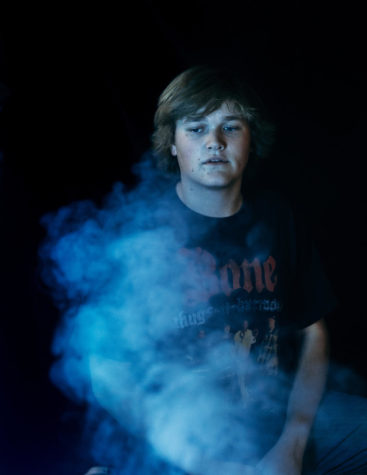
Trap music as a subgenre of rap is yet to have a hard definition, as creators are experimenting and discovering what the genre means to each individual. Pioneers such as Future and Migos have helped the rest of the nation define the style for themselves as the genre continues to evolve. With the artist’s input, Trap music relies more heavily on production, which is a departure from the lyrical focus of old-school hip hop. The beat can make or break a track, and producers are taking steps to credit themselves for their music. Listeners may have heard repetitive tags at the beginning of songs such as “Murda on the beats so it’s not nice,” a repetitive trademark of highly regarded Trap producer Murda Beatz. These are commonly known as producer tags, and the vast majority of trap songs begin with one. The appeal to many young music makers is that even their heros are using the same, or similar, technology to create their music. “My favorite parts about Trap music are the erotic drum patterns producers use to give the song its swing,” Kelmon said. “It is so new and refreshing.”
As Trap continues to evolve in the music industry, it has no certain direction, but it’s clear that the popularity is not going away anytime soon. The explosion of Trap is expected to last the decade, with new artists gaining attention each month. While the genre may still be growing, there will be a time down the road when trap artists are given the same recognition as Mick Jagger and Kurt Cobain. When millennials and youth are blasting “Black Beatles” at their high school reunions you can be sure they will be talking trash about whatever new genre succeeds trap.




